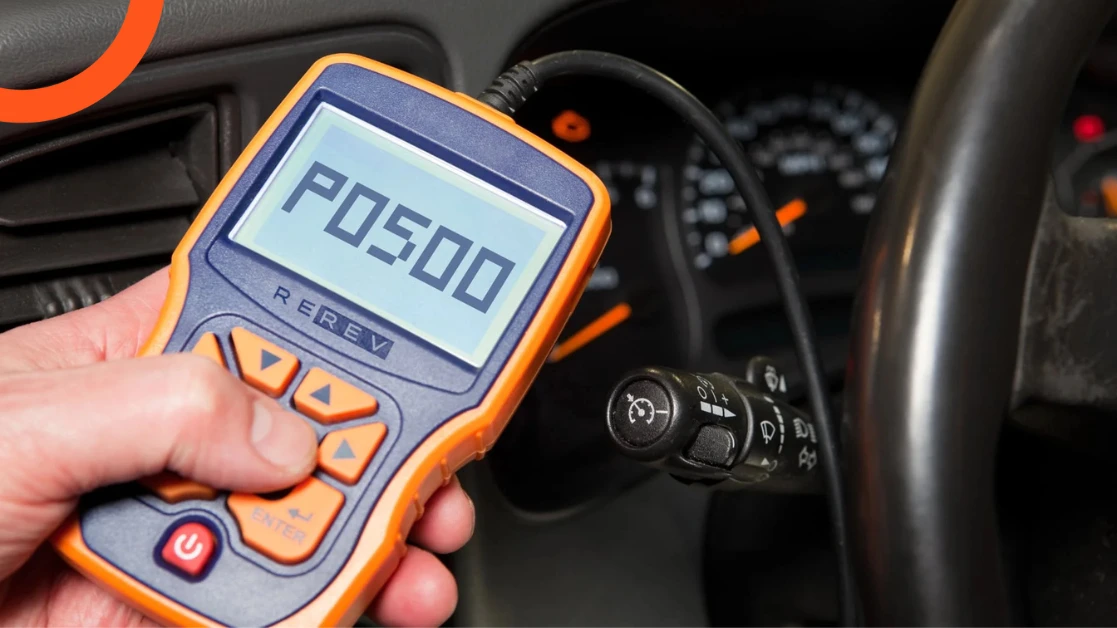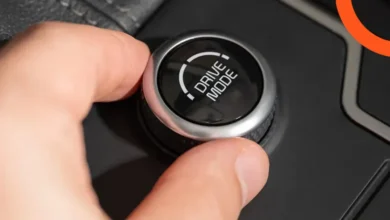Toyota P0500 Code: Meaning and How to Fix It
If your Toyota has displayed the P0500 code and you’re looking for a clear explanation, you’ve come to the right place. This code, which relates to a vehicle speed sensor malfunction, can be confusing for many drivers. In Saudi Arabia, where smooth driving conditions are essential, understanding this code is crucial to ensure your vehicle remains in top condition. In this article, we will break down what the P0500 code means, the possible reasons behind it, and how you can fix it to keep your Toyota running smoothly on the roads of Saudi Arabia.
What Is the Toyota P0500 Code?
The Toyota P0500 code refers to a malfunction in the Vehicle Speed Sensor (VSS), which plays a crucial role in monitoring the speed of your vehicle. In Toyota vehicles, this sensor sends real-time speed data to the Powertrain Control Module (PCM) or Engine Control Module (ECM), ensuring accurate speed readings. If the PCM detects an issue with the VSS, such as incorrect readings or no signal at all, it triggers the P0500 code.
This issue could stem from a variety of causes, such as a faulty sensor, damaged wiring, or a connection problem between the sensor and the transmission. The code may also appear under similar variations like P0501, highlighting the importance of having a certified technician properly diagnose the root cause. Timely diagnosis and repair are essential to avoid further complications with the vehicle’s performance and safety systems.
Common Symptoms of the P0500 Code
The P0500 code in your Toyota often points to problems with the vehicle’s speed sensor, which can affect critical systems. As a result, you may notice issues like:
- Malfunctioning or no speedometer readings
- Erratic automatic transmission shifting
- Inactive or unpredictable ABS performance
- Traction control not engaging properly
These issues can impact your vehicle’s performance and safety, making it important to address the P0500 code promptly.
What Causes the P0500 Code in a Toyota?
The P0500 code in a Toyota is commonly caused by issues related to the Vehicle Speed Sensor (VSS) or its supporting components. Problems with the sensor, wiring, or associated modules can prevent the proper transmission of speed data to the vehicle’s systems, leading to this error code. Below are the most common causes:
- Faulty or damaged Vehicle Speed Sensor (VSS)
- Issues with the Powertrain Control Module (PCM) or other modules
- Damaged or corroded VSS wiring or connectors
- Broken or damaged VSS drive gear
- Improper PCM configuration for the tire size
- Low transmission fluid levels
- Damaged or broken reluctor wheels
How to Diagnose the P0500 Code?
Diagnosing the P0500 code in a Toyota involves a systematic process using an OBD-II scanner to identify the issue and verify the Vehicle Speed Sensor (VSS) functionality. Here are the key steps typically taken during the diagnosis:
- Use an OBD-II scanner: This tool helps identify the cause of the P0500 code and allows you to reset the check engine light after fixing the problem.
- Check for additional codes: A technician will scan for any other codes and record freeze frame data, which provides a snapshot of the vehicle’s condition when the code was triggered.
- Clear the codes: Once the codes are noted, all present codes are cleared from the system.
- Perform a road test: The technician will drive the vehicle to see if the P0500 code reappears during normal driving conditions.
- Verify VSS signal: Using the scan tool, they will check if the Vehicle Speed Sensor (VSS) signal is functioning properly while driving.
- Inspect live data: The technician will analyze live data on the scan tool to confirm smooth sensor operation and identify any potential wiring or sensor issues.
- Check voltage: A multimeter will be used to test the voltage of the VSS to ensure it’s within the correct range.
- Visual inspection: If no faults are found in the scans, a visual inspection of the sensors and wiring is conducted to detect any physical damage or malfunction.
How to Fix the P0500 Code on a Toyota?
Here’s a step-by-step listing on how to fix the P0500 code on a Toyota:
Inspect the Vehicle Speed Sensor (VSS)
- Locate the VSS using your vehicle’s manual.
- Check for any physical damage or signs of wear.
Test the VSS for Voltage Issues
- Use a multimeter to check for proper voltage.
- If there are internal issues, the sensor may need to be replaced.
Inspect and Repair the Wiring
- Look for any frayed or damaged wiring connected to the VSS.
- Repair or replace damaged wiring as needed.
Replace the Vehicle Speed Sensor (if necessary)
- If the VSS is faulty, follow your manual’s instructions to remove and replace it.
Reset the ECU and Clear the Code
- Use a diagnostic tool to reset the vehicle’s ECU and clear the P0500 code.
Test Drive the Vehicle
- After repairs, take your car for a test drive to confirm the issue has been resolved.
Consult a Mechanic (if needed)
- If unsure of any step, it’s recommended to seek professional help to avoid further issues.
FAQs
Can you drive with a P0500 code?
While it is technically possible to drive a Toyota with a P0500 code, it’s not advisable, especially if the issue leads to noticeable symptoms like ABS or Traction Control System (TCS) malfunctions. These systems are crucial for maintaining safety in challenging driving conditions, such as rain or snow. Although the P0500 code might seem intermittent and may not immediately leave you stranded, ignoring it can result in more severe issues, such as power loss or transmission failure. To avoid further complications, it’s important to address the problem and seek professional inspection promptly.
How Serious Is the P0500 Code?
The P0500 code is a signal that should not be ignored, as it can lead to significant performance issues in your Toyota. A malfunctioning Vehicle Speed Sensor (VSS) can cause the speedometer to display incorrect readings, which may affect your ability to monitor speed accurately. Additionally, the automatic transmission might fail to shift smoothly or operate unpredictably, making the vehicle harder to drive. These symptoms not only impact the car’s performance but can also pose a safety risk. If you experience any of these issues, it’s crucial to have a certified technician inspect and resolve the problem promptly.
How Hard is It to Inspect a P0500 Code?
The complexity arises from the fact that several components, including the sensor itself, the wiring, and the connectors, could be causing the issue. To ensure accurate diagnosis and avoid missteps, it is highly advisable to leave this task to a certified technician. A professional will begin by thoroughly inspecting the vehicle speed sensor and checking all related wiring and connections for any visible signs of damage or wear, ensuring a precise and efficient resolution.





